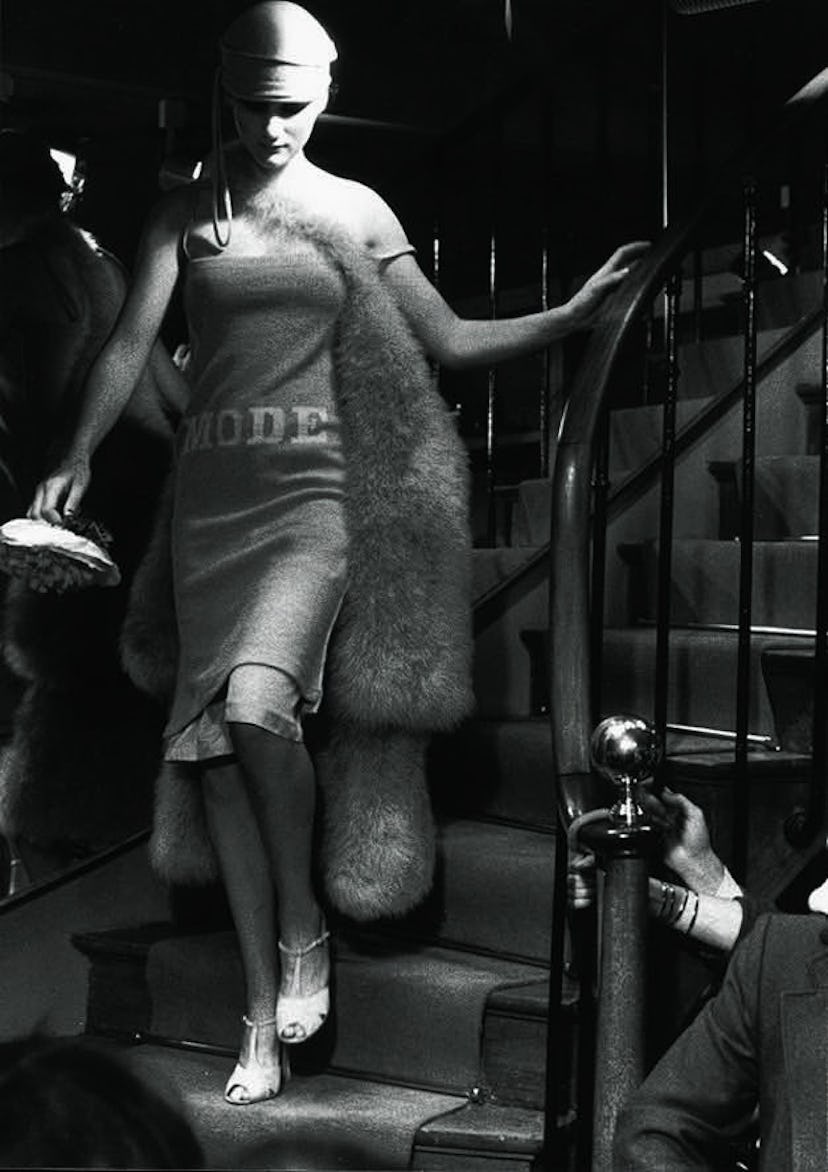The Moments of Transgression That Inspired Sonia Rykiel’s Paris Couture Week Debut

For the record, Sonia Rykiel does not do couture. Couture, in a certain sense, was exactly what Rykiel rebelled against when she set up shop on the other side of the Seine, on the Left Bank, in the 1960s. The St. Germain neighborhood, the name of which Rykiel emblazoned on cozy knits for the better part of four decades, was also home to the 1968 student uprising and was a hotbed for pushing the culture forward. When the maison was invited to present at Paris Couture Week in honor of their 50th anniversary this week, artistic director Julie de Libran jumped at the chance to honor the house’s founder and show the prowess of the atelier. She just insisted on doing it in a very Rykiel way. Today’s collection, called L’Atelier—not couture—was presented in the breathtaking courtyard of the École Nationale Supérieure des Beaux-Arts. Under a shining sun, de Libran presented the chunkiest of knits, elegant plumes of feathers on hats, dresses, and sheer shirts, and numerous takes on suiting—all sans bra, just as Rykiel would have. The rich archive of the half-century old label informed much of today’s collection; here, we’ve taken a look at the archival runway looks, personal notes from Sonia Rykiel herself, and moments from the 70’s, 80’s, and early 00’s that inspired today’s not-couture presentation.
1
The Los Angeles Times declared in 1967, “Couture is not enough. You need a Rykiel.” Sonia Rykiel’s debut 1968 collection, seen here in recovered snaps from the house’s archive, established the codes of her left bank maison: stripes, slim-fitting knits, leopard spots, and a revolutionary spirit.
2
In her 1977 spring collection, Sonia Rykiel’s collection said it like she meant it—”mode.” Rykiel was singlehandedly changing the way women in France got dressed. After “mode,” knits declaring “champion” dropped in 1982, “artist” in 1983, and “romance” in 1988.
3
And for Spring 1988, Rykiel sent out a hooded knit on a smiling model, declaring “Boheme.” Unlike many of the runway shows today, the women who walk in the Sonia Rykiel shows are always bright and happy, and something that creative director Julie de Libran does to this day.
4
Sonia Rykiel’s personal notes —hand written, and on tape—helped inform Julie de Libran’s couture-like collection to celebrate the house’s 50-year anniversary.
5
The essence of Sonia Rykiel’s Left Bank ease comes through in this 1977 head-to-toe knitwear look, an ensemble that could easily be worn at any time in a woman’s life, including pregnancy. It was Rykiel’s own pregnancy, and the personal difficulty she has finding clothes, that led to the launch of her eponymous collection.
6
In the 70’s, Sonia Rykiel embraced clothing that offered liberated movement, and bold splashes of color. For the spring of 1975, the Left Bank girl wore head-to-toe orange, and gracefully wrapped her statement robe coat around her.
7
Early aughts model of the moment Jessica Stam walks down the Sonia Rykiel runway for the Fall/Winter 2004 show in a barely-there sheer dress, with feminine ruffles. It’s only up close that one can see the strips of fabric sewn on the dress in a cheeky manner, to accentuate the wearer’s body. At today’s L’Atelier show, de Libran re-invented the super sheer knit, added plumes of feathers and showed it with pants.
8
The finale at Sonia Rykiel’s 2005 spring show featured lots of classic Rykiel stripes, running kids, and a bevy of smiling models.
9
A Sonia Rykiel bride is chic and laid-back, and in 2008 that meant Irina Lazareanu in a sheer nude-hued gown, with a plume of feathers thrown over one shoulder.
10
Ten years later, Julie de Libran’s Sonia Rykiel bride still has her feather plums, but her cream embroidered ‘gown’ is worn open, over a pair of cropped flared jeans. The modern look is just how Rykiel herself would have imaged a Left Bank bride today.